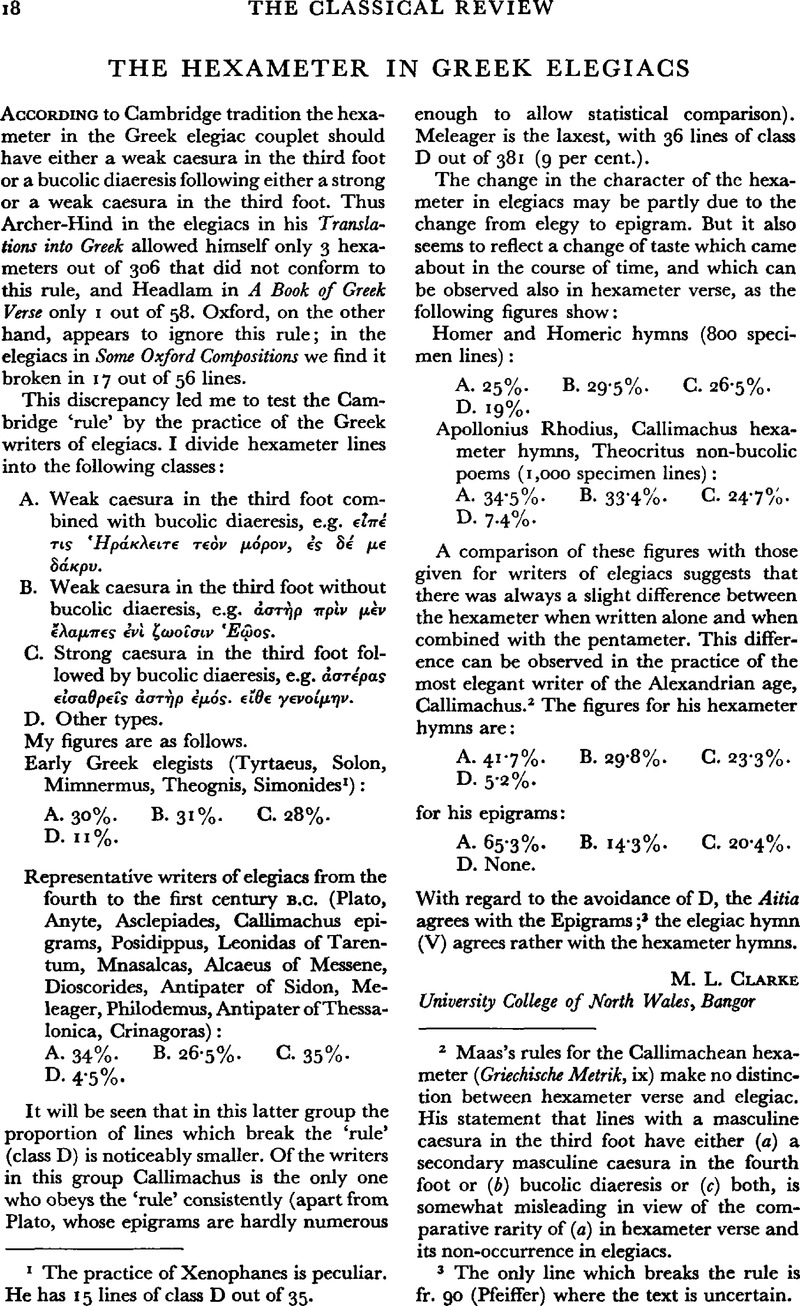No CrossRef data available.
Article contents
The Hexameter in Greek Elegiacs
Published online by Cambridge University Press: 13 February 2009
Abstract

- Type
- Review Article
- Information
- Copyright
- Copyright © The Classical Association 1955
References
1 The practice of Xenophanes is peculiar. He has 15 lines of class D out of 35.
2 Maas's rules for the Callimachean hexameter (Griechische Metrik, ix) make no distinction between hexameter verse and elegiac. His statement that lines with a masculine caesura in the third foot have either (a) a secondary masculine caesura in the fourth foot or (b) bucolic diaeresis or (c) both, is somewhat misleading in view of the comparative rarity of (a) in hexameter verse and its non-occurrence in elegiacs.
3 The only line which breaks the rule is fr. 90 (Pfeiffer) where the text is uncertain.


